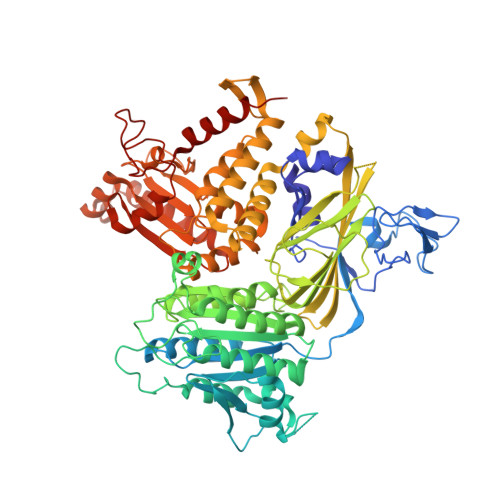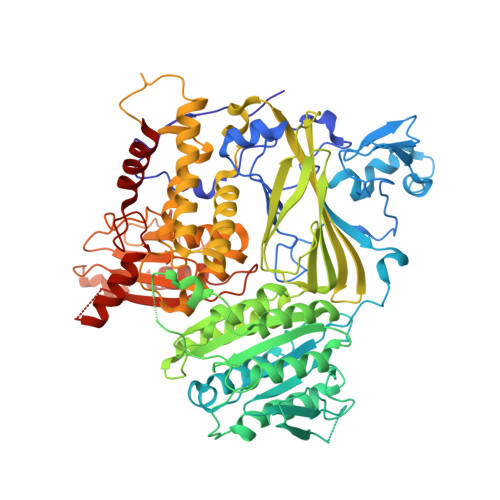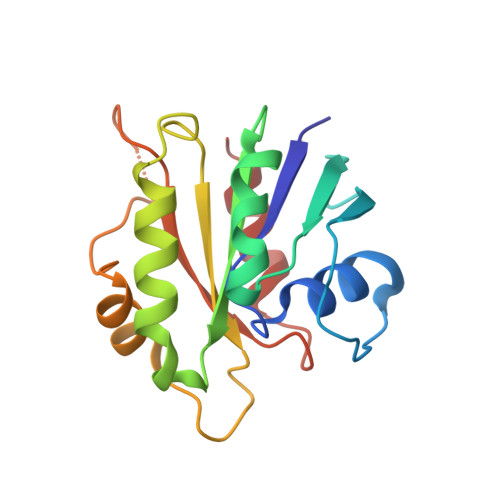Subtomogram averaging of COPII assemblies reveals how coat organization dictates membrane shape.
Hutchings, J., Stancheva, V., Miller, E.A., Zanetti, G.(2018) Nat Commun 9: 4154-4154
- PubMed: 30297805
- DOI: https://doi.org/10.1038/s41467-018-06577-4
- Primary Citation of Related Structures:
6GNI - PubMed Abstract:
Eukaryotic cells employ membrane-bound carriers to transport cargo between compartments in a process essential to cell functionality. Carriers are generated by coat complexes that couple cargo capture to membrane deformation. The COPII coat mediates export from the endoplasmic reticulum by assembling in inner and outer layers, yielding carriers of variable shape and size that allow secretion of thousands of diverse cargo. Despite detailed understanding of COPII subunits, the molecular mechanisms of coat assembly and membrane deformation are unclear. Here we present a 4.9 Å cryo-tomography subtomogram averaging structure of in vitro-reconstituted membrane-bound inner coat. We show that the outer coat (Sec13-Sec31) bridges inner coat subunits (Sar1-Sec23-Sec24), promoting their assembly into a tight lattice. We directly visualize the membrane-embedded Sar1 amphipathic helix, revealing that lattice formation induces parallel helix insertions, yielding tubular curvature. We propose that regulators like the procollagen receptor TANGO1 modulate this mechanism to determine vesicle shape and size.
Organizational Affiliation:
Institute of Structural and Molecular Biology, Birkbeck College, Malet St., London, WC1E 7HX, UK.



















